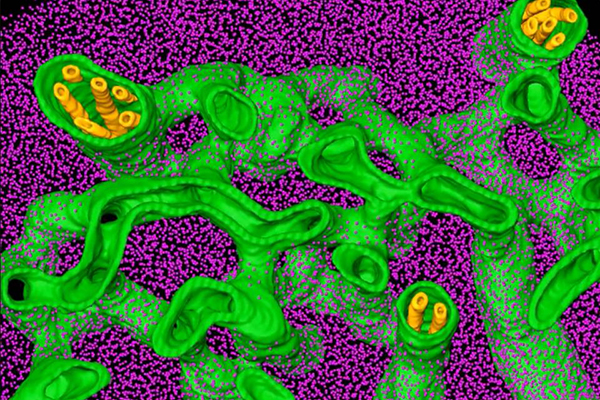
Full Text:
Two new studies of green algae--the scourge of swimming pool owners and freshwater ponds--have revealed new insights into how these organisms siphon carbon dioxide from the air for use in photosynthesis, a key factor in their ability to grow so quickly. In the studies published this week, a team of scientists reported the first detailed inventory of the cellular machinery--located in an organelle known as the pyrenoid--that algae use to collect and concentrate carbon dioxide.
The researchers also found that the pyrenoid, long-thought to be a solid structure, actually behaves like a liquid droplet that can dissolve into the surrounding cellular medium when the algal cells divide. Understanding this process may someday help researchers improve the growth rate of crops such as wheat and rice. “If we could engineer other crops to concentrate carbon, we could address the growing world demand for food,” one of the researchers said.Image credit: Benjamin Engel/Max Planck Institute of Biochemistry